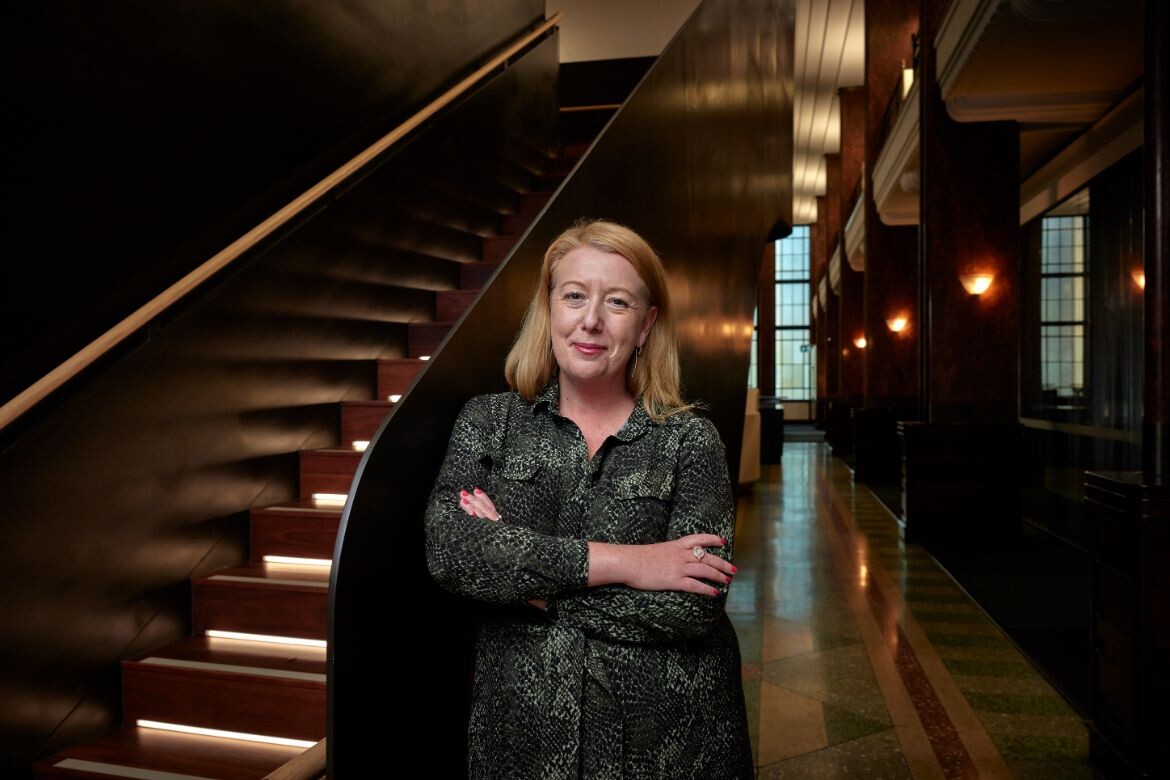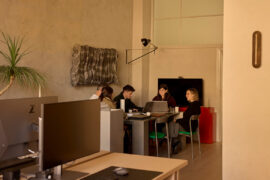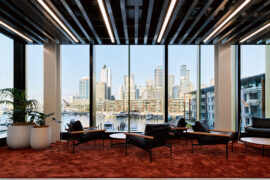As we enter the age of storytelling and empathetic leadership, what are the intangibles that feed a workplace’s culture? Alice Blackwood speaks with Amanda Stanaway, Dr Amantha Imber and Nat Cagilaba.

Image courtesy of unsplashed.com, photography by Christina @ wocintechchat.
July 19th, 2023
This article was first published in INDESIGN Magazine, The ‘Magnetic Workplace’ Issue, purchase here.
We’ve been talking about ‘earning the commute’ for a good 12 months now. But it occurs to me that the conversation around earning the commute with workers is much wider than simply providing a state-of-the art workplace destination filled with premium quality amenity.
Because what I’ve been hearing is that it’s not necessarily getting traction with people. Many would still opt to work from home a majority of their time. Why?
As Amanda Stanaway, head of global user strategy at ERA-co, says, it’s a case of culture eats strategy for breakfast. In the wake of the pandemic, as people move permanently into flexible working mode, Stanaway has observed a sense of culture diminishing within organisations. There’s less ‘stickiness’ between people. Depth of relationships, knowledge exchange and togetherness is delivered in ‘hard version’ rather ‘soft version’. And something is being lost in the transition. So, what makes a healthy workplace culture?

Two of the most important ingredients are belonging and common focus, traditionally delivered as an almost intangible quality soaked up through osmosis and being together in the same place at the same time. But, with a large proportion of people working from home, rising from eight per cent in 2019, to 40 per cent in 2020, and 38 per cent by 2021 (ref), these two qualities are no longer fed primarily by in-person engagement.
Add to this the potential long-term impacts of working from home, which include career prospects affected due to (actual or perceived) job effectiveness, reduced opportunities for collaboration, networking, learning and training, and reduced face-to-face interaction with managers (ref), it changes the way culture is delivered and experienced, leaving leaders grappling with how to cultivate culture through a computer screen.
Nat Cagilaba is the managing director of We Are Unity, a consulting agency that specialises in sustainable business performance with a focus on leveraging purpose, defining vision, embedding strategy, building brands and unlocking performance culture. “What are the components of culture?” poses Cagilaba.
“If we break down what culture is, it’s a sense of belonging.” Belonging, he says, is about feeling valued in what you do and connected by a common focus (whether that be purpose, strategy or vision).
“To belong and feel connected gives us a common focus. It drives business performance and differentiates from others, supporting in attraction and engagement of team members.
“In the absence of ‘let’s be together all the time’ everything has changed. We need to be intentional in how and why we bring people together.”

As Cagilaba suggests, we have entered the age of “the art of storytelling” where “we don’t have body language or the pre- or post-meeting chats” to lean on. Organisations and their leaders must build emotional attachment and connection. Every interaction must demonstrate purpose-led decision making, and values-driven interactions must be consistent with the stories that are told.
Cagilaba supports many organisations in moving towards a purpose-led, values-driven approach – foundations that weren’t necessarily articulated in the pre-pandemic years. Now, they must be articulated and brought to the fore. “Strategies to harness culture are becoming much more emotive. To create connection and build a common language between people to reinforce the sense of belonging.”
This puts a new emphasis on the role of leaders and managers as they engage in a more empathetic leadership style, reading between the lines of people’s behaviour on- screen, understanding who is thriving and who is surviving.
And what does it mean, to thrive at work in 2023? Dr Amantha Imber, an organisational psychologist and founder of behavioural science consultancy Inventium, says: “We know from research that the more autonomy – that is, choice and flexibility – you can give employees, the more motivated and engaged they will feel.”

The key to happy, motivated, productive people is to give them “as much choice as possible in terms of when and where they work from”. She also states that leaders who set a compelling vision and mission and are purpose driven will always deliver effective leadership. And connection is king: “I do think leaders that prioritise connection are incredibly important… This is a lot more important than pre-pandemic where that connection happened naturally and automatically.”
Dr Imber is the co-creator of the AFR BOSS Best Places To Work competition, which is adjudicated on key drivers that contribute to creating a great workplace. These include how much autonomy people have; how, when and where they do their work; flexibility in how they work; opportunities for learning and development; connectedness and a sense of belonging; and is the organisation purpose driven?
“Earning the commute is an interesting phrase,” she says. “I understand the need for businesses to have employees use the office, but ultimately, from my point of view as an organisational psychologist, autonomy wins. Choice and freedom is a huge motivator.” In Dr Imber’s view, using the physical office environment to build connection among employees is one of the most important things leaders can do to earn the commute.
As brand, culture, vision and strategy enter a new emotional state, the role of the office is the existential question we are all facing, says Cagilaba. He believes it is about bringing people together in an energised way, to connect and collaborate in the process of building ‘that thing’ – a culture focused on delivering a business’ central focus.
Stanaway, too, feels strongly that the workplace is now more dynamic and changeable than ever before. “You cannot think of the workplace as set and forget,” she says. “It must be curated and recreated every day,” she says. “Leaders are critical to the success of the workplace. While certain design elements can help people work a certain way, leaders must help to orchestrate and build on it.”
Because when it comes to compelling people to commit their whole selves to a company, and make it into the office as well, culture is the glue: emotional connection, a greater sense of purpose, and belonging to that purpose, too.
Read more about workplace design in our INDESIGN ‘Magnetic Workplace’ Issue.
We think you might like this article about BVN’s classic Queenslander Studio in Brisbane.
INDESIGN is on instagram
Follow @indesignlive
A searchable and comprehensive guide for specifying leading products and their suppliers
Keep up to date with the latest and greatest from our industry BFF's!

Welcomed to the Australian design scene in 2024, Kokuyo is set to redefine collaboration, bringing its unique blend of colour and function to individuals and corporations, designed to be used Any Way!

A curated exhibition in Frederiksstaden captures the spirit of Australian design

For Aidan Mawhinney, the secret ingredient to Living Edge’s success “comes down to people, product and place.” As the brand celebrates a significant 25-year milestone, it’s that commitment to authentic, sustainable design – and the people behind it all – that continues to anchor its legacy.

Founded by Ana Ćalić McLean and Josh McLean, In Addition is a design studio creating thoughtful, client-focused architecture and interiors.

Central Station by Woods Bagot in collaboration with John McAslan + Partners has been named one of two joint winners of The Building category at the INDE.Awards 2025. Recognised alongside BVN’s Sirius Redevelopment, the project redefines Sydney’s historic transport hub through a transformative design that connects heritage with the demands of a modern, growing city.
The internet never sleeps! Here's the stuff you might have missed

The Mim x Tim show: Miriam Fanning of Mim Design joins Timothy Alouani-Roby at The Commons in Melbourne to discuss art, design on television, interior design and more.

Warren and Mahoney’s design for Beca’s Auckland headquarters turns the mechanics of engineering into poetry, rethinking how workplace design can reveal its own systems.